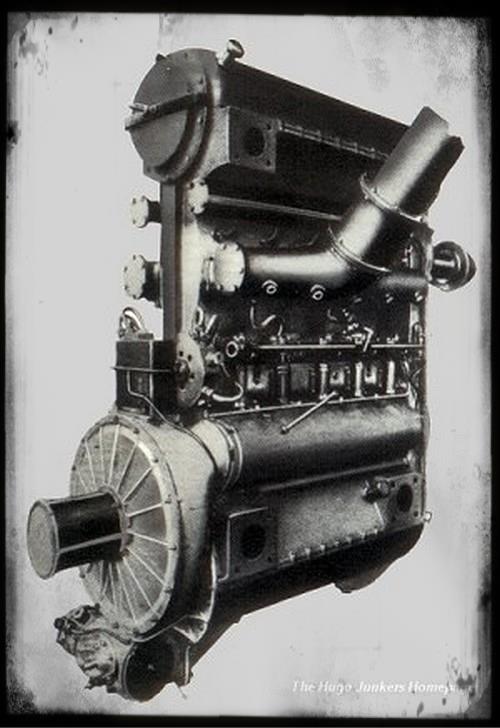Junkers Fo3
Five Cylinder, two strokes, diesel oil driven

A major disadvantage of the carburetor engines was the small operating range. In the mid 20s Junkers therefore returned to the diesel- and oil-engine designs, which offered good performances as ship engines.
While Junkers gathered a lot of experience about the construction of oil and diesel aircraft engines from the Junkers Fo2, his first real aircraft engines still were carburator engines, like the L2 and L5. Nevertheless, Junkers was sure, that just diesel engines would offer an economic aeronautical power unit. Therefore he continued his studies about diesel engines parallel to the carburetor engines.
In 1926 the Junkers Fo3 resulted from these studies. This was Junkers first real diesel driven engine. While the cylinders of the Fo2 were laying, the Fo3 cyclinders were in an upright, vertical position.
The Fo3 was an experimental engine, which should allow to gather expierence about the two stroke mechanism. It was never used on an aircraft
Technical Data:
| Engine Designator | year | Cyl. | Bore in mm | Stroke in mm | Volume in litres | Compress. in % | length in m | Height in m | Width in m | Weight in kg | T/O Power in kW | Cruise Power in kW | RPM. | Fuel Consump. g/kWh |
|---|---|---|---|---|---|---|---|---|---|---|---|---|---|---|
| Fo 3 | 1926 | 5 | 140 | n.a. | n.a. | n.a. | n.a. | n.a. | n.a. | na. | 610 | n.a. | n.a. | n.a. |
Aircraft Types equipped with Fo 3:
None used in aircraft.
Literature:
- National Advisory Committee for Aeronautics
Development of the Junkers Diesel Aircraft Engine
Washington, May 1930, Download PDF here
introduced Nov 1996, transfered Aug 2017
http://hugojunkers.bplaced.net/
contents last updated 13 Aug 2004

